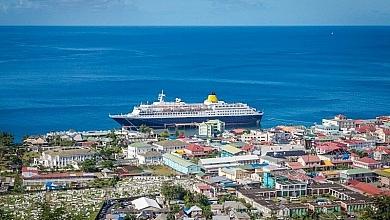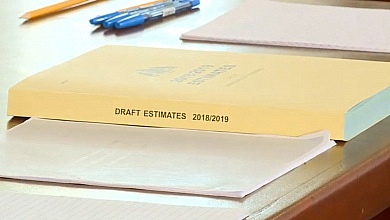IMF Forecasts Growth, Warns of Debt and Employment Gaps in Dominica’s Recovery

- IMF forecasts 4.25% growth in 2025
- Tourism rebounds, cruise leads surge
- Inflation drops to 3.1 percent
- Public debt still remains high
- Credit unions expand lending role
- IMF urges fiscal reform, discipline
Dominica’s economy continues to show signs of resilience and steady expansion, with the International Monetary Fund (IMF) projecting a growth rate of 4.25% for 2025. This outlook builds on a 3.5% rise in real Gross Domestic Product (GDP) recorded in 2024, bolstered by a rebound in tourism and strategic public investment.
The IMF released its findings following the conclusion of its Article IV Mission held between March 24 and April 3, 2025. The mission’s final statement credits the island’s economic momentum to a resurgence in tourism arrivals—now exceeding pre-pandemic levels by roughly 32%—and infrastructure development aimed at long-term competitiveness, including the transition to geothermal energy.
Despite these gains, the IMF painted a more nuanced picture. The surge in visitor numbers is now driven mainly by the cruise industry rather than overnight stays, presenting new dynamics for the sector. While this shift brings increased volume, it may also reduce per capita visitor spending and strain local infrastructure without the sustained economic benefit of longer stays.
The IMF also noted that inflation, which spiked at 7% in 2023, has moderated to an average of 3.1% in 2024. This easing in consumer prices, coupled with narrowed fiscal imbalances, points to improving macroeconomic stability. Still, public debt remains a significant challenge. Dominica’s debt levels, still elevated above pre-pandemic thresholds, are largely the result of repeated natural disasters and the economic fallout of the COVID-19 crisis.
With current fiscal policies, the IMF estimates public debt could decline to 69.75% of GDP by 2035, provided there is sustained fiscal discipline. The country’s primary deficit dropped to 2% of GDP in FY2023/24 and is projected to edge into a modest surplus of 0.1% in FY2024/25, assisted by recent tax measures such as increased duties on sugary beverages, tobacco, alcohol, and diesel.
Meanwhile, Dominica’s financial system was deemed “stable and liquid,” though challenges remain. The IMF reported a continued decline in bank lending since 2023, attributing the trend to de-risking strategies and balance sheet constraints. In contrast, credit unions have significantly expanded their reach, now holding 53% of private sector credit—a trend that the IMF says signals the need for modernized regulatory frameworks to bridge supervisory gaps and strengthen financial oversight.
The report also recommended a bold fiscal consolidation strategy to ease debt vulnerabilities. Among the proposals are:
- Adjusting VAT rates to improve collection efficiency
- Rationalizing tax incentives to curb leakage
- Introducing targeted levies on tourism and highways
- Instituting a solid waste management fee
- Enhancing tax administration and compliance mechanisms
While advocating for a tighter fiscal policy, the IMF stressed the importance of maintaining essential investments in health, education, and climate resilience. It also called for reforms to ensure the sustainability of Dominica’s social protection programs, noting that well-targeted safety nets are crucial for inclusion and long-term stability.
The Fund projects that as large-scale capital projects wind down and fiscal consolidation intensifies, GDP growth will gradually converge toward 2% in the long term. Still, tourism, a normalized flow of investment imports, and decreased reliance on fossil fuels through geothermal rollout are expected to support the current account balance by 2028.
Dominica’s government, in collaboration with international partners, appears to be steering the economy along a cautiously optimistic trajectory. However, significant structural and fiscal hurdles remain, particularly in employment and debt sustainability. The IMF’s message is clear: growth alone is not enough—it must be accompanied by careful reforms to protect the island’s economic future.
This article is copyright © 2025 DOM767








